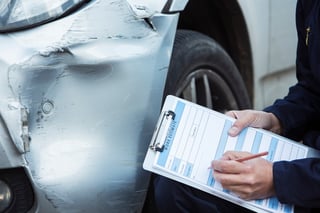
4 Quick Tips for Accurately Determining Total Loss Thresholds

How adjusters determine if the valuation of a vehicle involved in an accident meets the total loss threshold in a particular state can vary widely.
Having a good understanding of what the total loss thresholds are for a given state is the basis for an accurate valuation. There are also many elements that factor into determining what constitutes a total loss such as title transfer fees, state taxes that vary from state to state. An adjuster only familiar with the laws in his state may not provide an accurate valuation for a vehicle in other states.
In addition to having the knowledge required for a particular state, many times the extra steps are not taken by an adjuster that are necessary for an accurate valuation.
Taking the Extra Steps for a Proper Valuation
Having a proper valuation of the vehicle is crucial not only to determine if the vehicle is a total loss but to minimize the time and expense of processing the claim.
By taking the extra steps, a proper valuation will:
-
Be fair to the consumer
-
Support arbitration
-
Hold up better in the legal system
-
Decrease the chances of someone arguing the valuation
Below are some extra steps that can determine the proper valuation.
Some common section headers include:
Step 1: Immediate Vehicle Inspection
 The most crucial item is to get the vehicle inspected ASAP to see if the vehicle is close to a total loss. Sometimes the vehicle must be taken to a shop and torn down to discover hidden damage which may push that vehicle over into total loss status. That coupled with the threshold will help you determine a total loss.
The most crucial item is to get the vehicle inspected ASAP to see if the vehicle is close to a total loss. Sometimes the vehicle must be taken to a shop and torn down to discover hidden damage which may push that vehicle over into total loss status. That coupled with the threshold will help you determine a total loss.
Although it sounds obvious, making the vehicle inspection a priority will reduce storage fees and get the vehicle damage resolved and reduce time in a rental vehicle as well. Timing is the essential element here which will result in less downtime, rental, and storage fees.
Step 2: Obtain Accurate Reports
Reports can reveal if the vehicle is salvaged with a rebuilt title or salvage title. Using total loss worksheets and fair market value reports does not provide an accurate appraisal.
Using reports such as the CCC One Valuation or VVS reports provide accurate data.
Step 3: Identify the Lienholder
Receiving the payoff figure from the lienholder should be done immediately. The title must be released to dispose of the salvage. Paying the lien holder and ensuring they release and send the title will help speed up the process.
Step 4: Get the Title
Many times the salvage company who picks up a total loss vehicle will handle the title transfer. This is an important step since most states mandate that once a vehicle is considered a total loss, the vehicle must have a “salvage” title to protect the consumer.
Conclusion
Understanding the total loss thresholds and other elements that vary from state to state is the basis for an accurate valuation. Adjusters also need to take the extra steps necessary and use the most accurate data available.
Taking these extra steps will result in the proper valuation of the vehicle to determine if there is a total loss and will minimize the time and expense of processing the claim.
Click below to learn more about our General Liability services.


